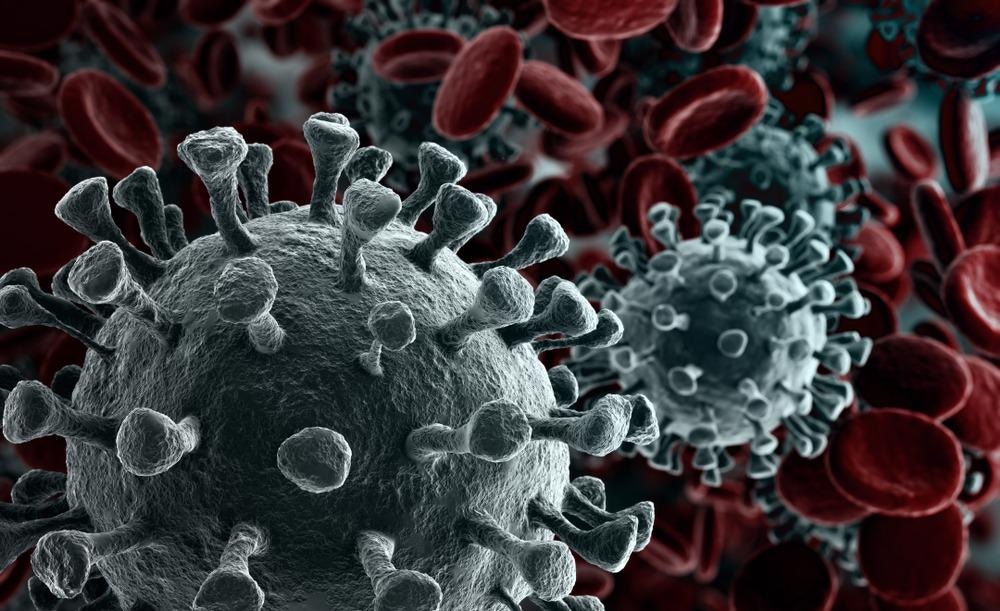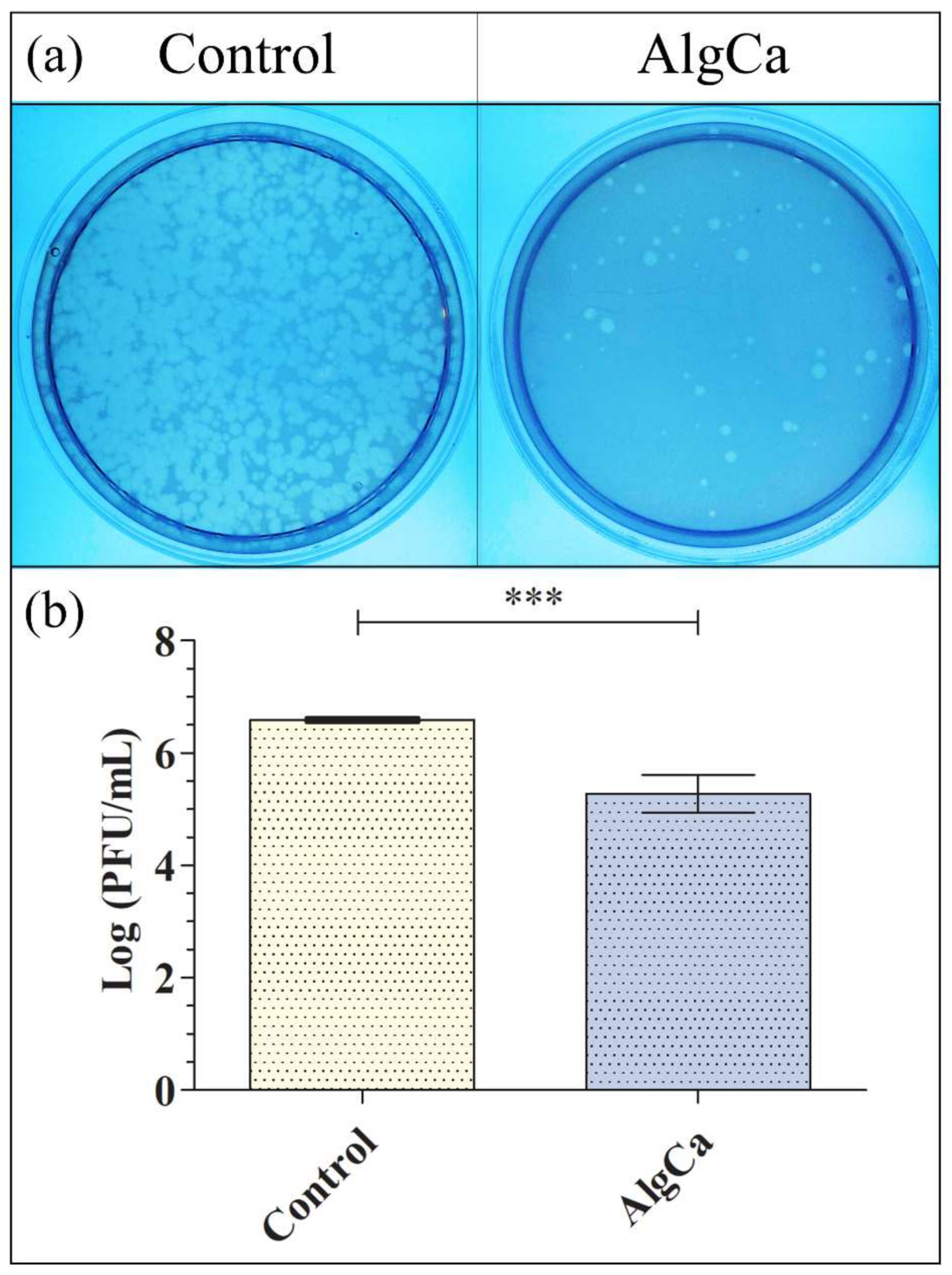Researchers from Spain and Japan have investigated the antiviral properties and cytotoxicity of calcium alginate films, providing a novel approach for tackling viruses and limiting harm to human health. The study has been published in the journals Polymers.

Image Credit: Biocompatible Films of Calcium Alginate Inactivate Enveloped Viruses Such as SARS-CoV-2. Image Credit: creativeneko/Shutterstock.com
The Need for Advanced Antiviral Materials in the Post-Pandemic World
Whilst the successful rollout of vaccination programs, outbreak control measures, and the development of novel antiviral therapies has gone a long way toward tackling the spread of infections such as that of COVID-19, there is a need for advanced materials with antiviral properties for use in medicine.
Materials scientists have investigated several materials for biomedical applications, and amongst these, alginate films have shown promise. Sodium alginates have been evaluated in several studies, displaying enhanced antiviral activity and excellent physical, biological, and chemical properties that make them attractive for numerous industrial applications.
Sodium Alginate
Sodium alginate is a linear-structured carbohydrate polymer. A hydrophilic substance, it is biocompatible, biodegradable, non-toxic, renewable, and cost-effective compared to other polymers. As it is water-soluble, sodium alginate can form hydrogels. One salt it can be crosslinked with is calcium carbonate, which forms calcium alginate.
α-L-guluronic acid in the polymer’s backbone has been linked to sodium alginate’s antiviral properties. Increasing the ratio of acid consequently increases the polymer’s antiviral activity. Despite the known activity of sodium alginate against viruses, the activity of calcium alginate is still poorly understood. Some studies have indicated that this material has a negligible effect on viruses such as Hepatitis C and Influenza.
The Study
The authors behind the study in Polymers have hypothesized that films of calcium alginate can improve the material’s antiviral properties. They have noted that previous studies focused on capsules or fibers, and as this material’s antiviral activity appears to be linked to the anionic polymer’s negative charges, constructing films of the material may concentrate these, enhancing the ability of the material to inactivate viruses.
The activity of the films against Bacteriophages and the Delta variant of SARS-CoV-2 was evaluated by the research team. Along with the antiviral properties of the material, the authors studied its cytotoxicity. Toxicity was evaluated in human keratinocyte cells to elucidate the safety and potential of the material for biomedical use.

MTT cytotoxicity tests of extracts obtained from the calcium alginate films (AlgCa), negative control (culture medium used to produce the films extracts), and positive control (cytotoxic 1000 μM zinc chloride solution) cultured in human keratinocyte HaCaT cells at 37 °C. ANOVA with subsequent Tukey’s post hoc test: *** p > 0.001; ns, not significant. Image Credit: Cano-Vincent, A et al., Polymers
Results of the Study
As the intended use of these films is for biomedical applications, the cytotoxic potential of the substance is a key concern. The results of the study’s toxicological analysis were highly promising. Human keratinocyte cells were grown in a cell growth medium, with controls used. 100% of the cells were viable after incubation with the films, with virtually no cells viable in the control group, demonstrating that this material has no cytotoxic effects on human cells, meaning this material can be considered safe for biomedical applications.
Antiviral Bacteriophage assays displayed promising results. Again, controls were used, with assay results indicating a marked reduction in viral proliferation after incubation compared to the control group. The film inactivated 94.92% of the viruses after a contact time of 30 minutes, demonstrating the films’ superior antiviral properties.
To ensure there were no false results due to bacteriophage attachment to the film before the assays, bacteriophage RNA was extracted and quantified by the researchers both before and after assays. No significant difference was observed either before or after contact with the material.
The ability of the material to inactivate SARS-CoV-2 was even better than the results obtained from the Bacteriophage assay. The films inactivated 96.94% of the viral samples after a contact time of 30 minutes. This demonstrated that these films could be considered advanced materials to help tackle future pandemics, helping to protect life and limit damage to world economies.

Antiviral activity of calcium alginate against bacteriophage phi 6 determined by the double-layer method: (a) Titration images (undiluted samples) for AlgCa film and control after 30 min of viral contact. These images show the reduction in infection capacity (reduction in lighter spots); (b) Viral inactivation in log (PFU/mL) for AlgCa film and control after 30 min of viral contact. Student’s t-test (*** p > 0.001). Image Credit: Cano-Vincent, A et al., Polymers
In Conclusion
The favorable antiviral activity of the films studied in the research demonstrates that this material is a superior candidate for inactivating enveloped viruses by binding to their envelopes than the previously reported fibers and capsules. Moreover, the near-total lack of cytotoxicity of this novel material makes it safe for biomedical use.
Based on the observations in the study, these biocompatible films can be considered for a variety of industrial applications, which will help tackle viruses and limit the damage caused by future pandemics of similar viruses. The development of these films represents a novel approach to the problem of tackling viral infections and demonstrates the role played in biomedical science by research into advanced materials.
Further Reading
Cano-Vincent, A et al. (2022) Biocompatible Films of Calcium Alginate Inactivate Enveloped Viruses Such as SARS-CoV-2 [online] Polymers 14(7) 1483 | mdpi.com. Available at: https://www.mdpi.com/2073-4360/14/7/1483
Disclaimer: The views expressed here are those of the author expressed in their private capacity and do not necessarily represent the views of AZoM.com Limited T/A AZoNetwork the owner and operator of this website. This disclaimer forms part of the Terms and conditions of use of this website.